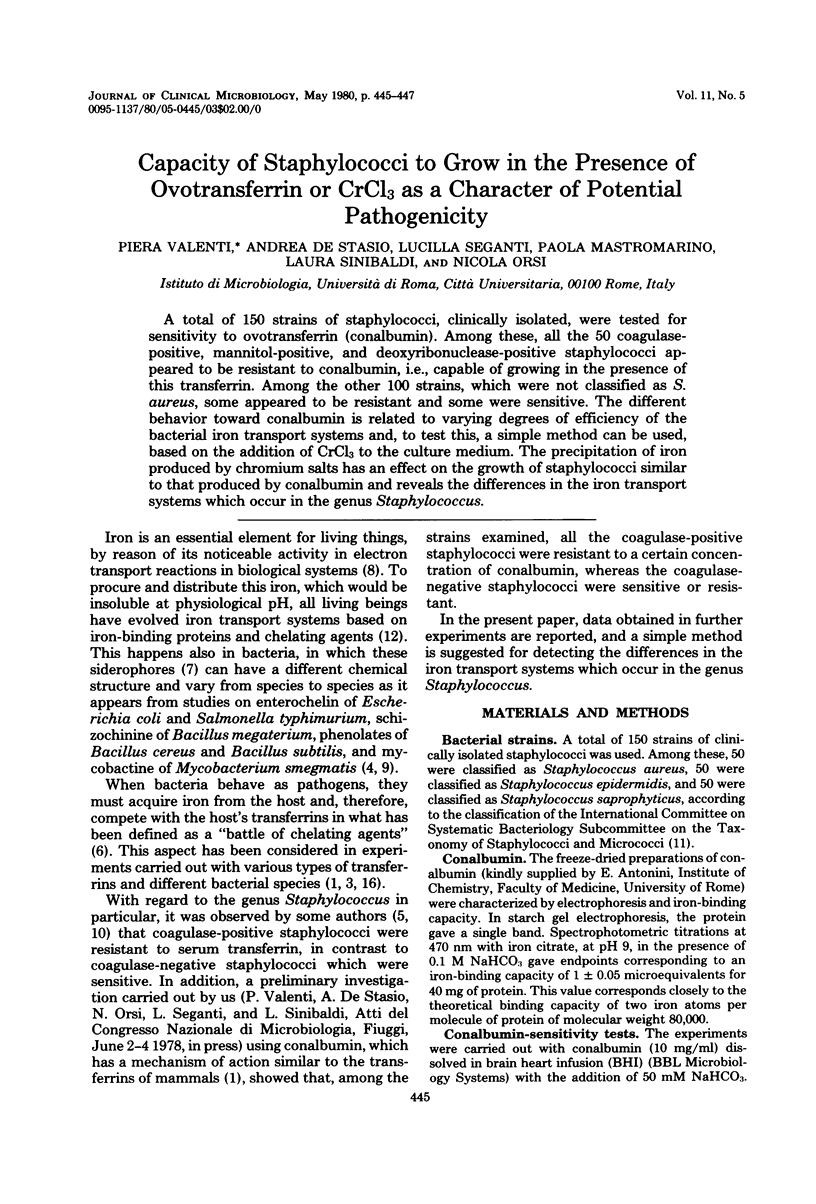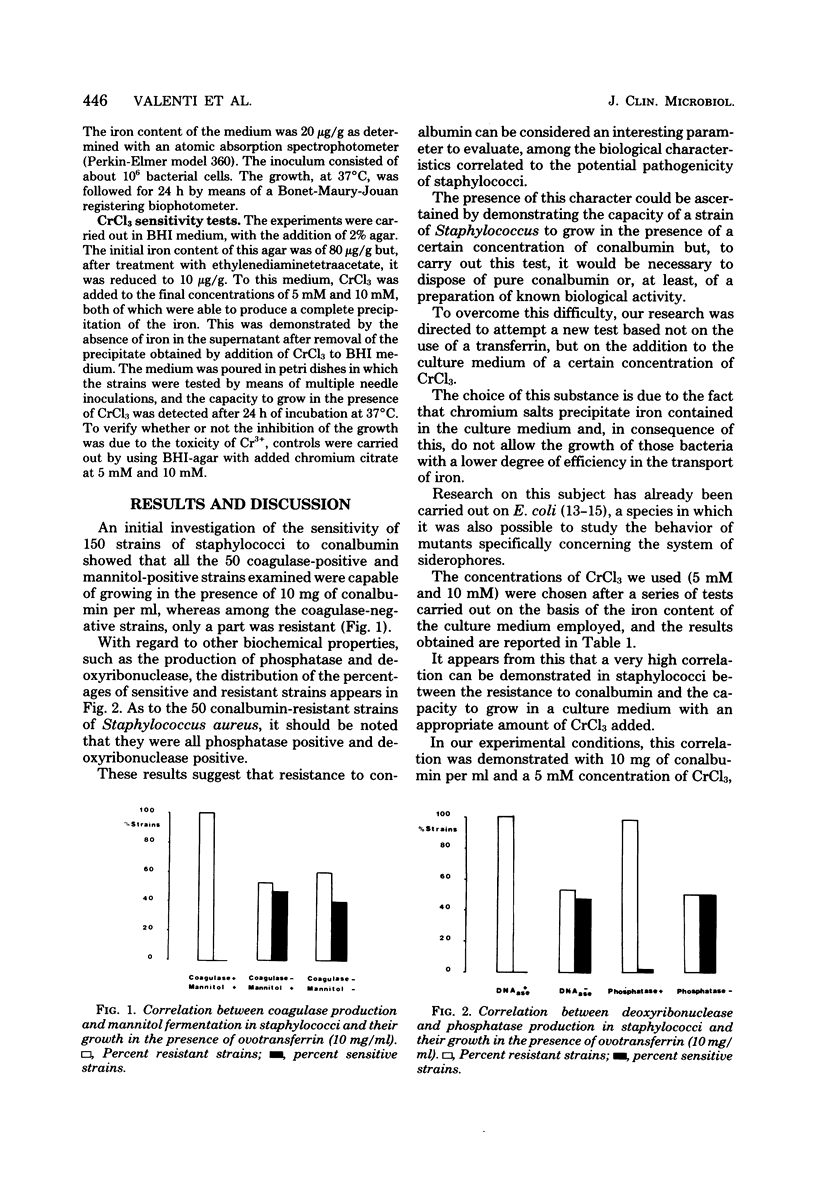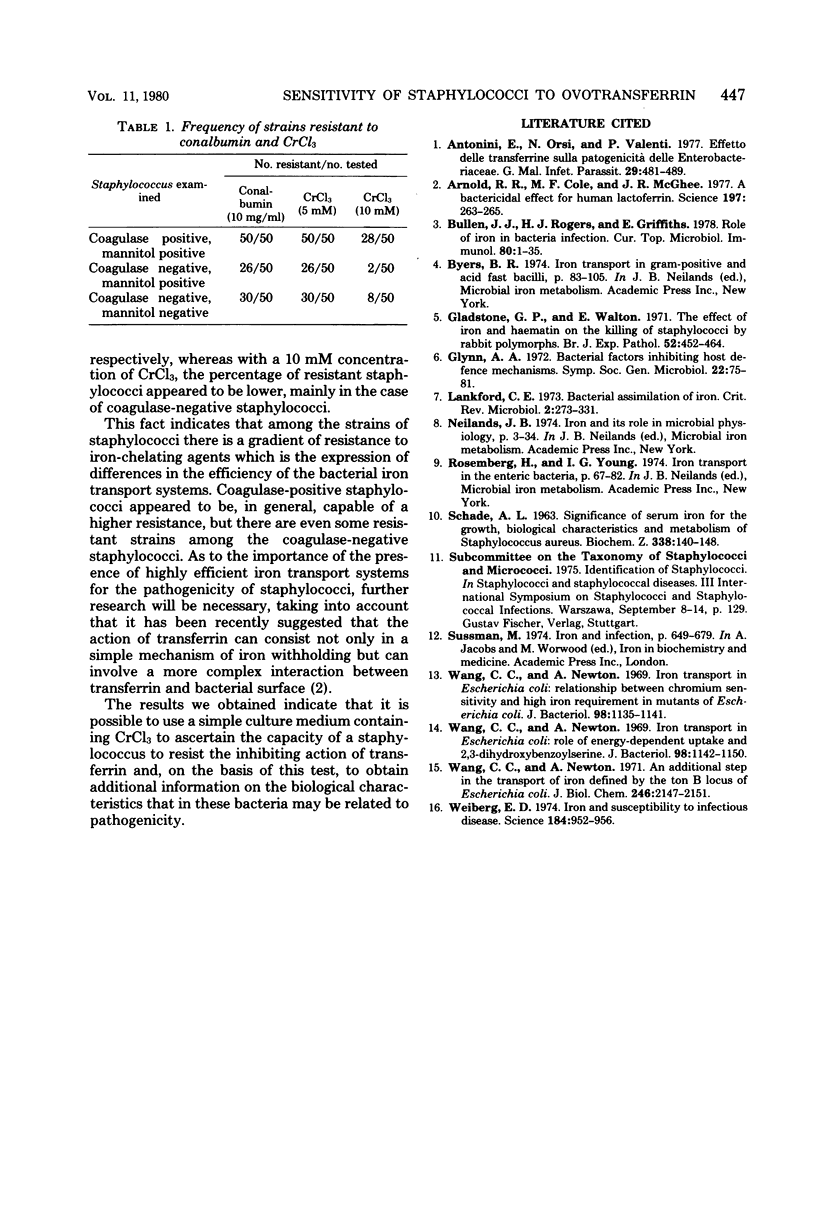Abstract
A total of 150 strains of staphylococci, clinically isolated, were tested for sensitivity to ovotransferrin (conalbumin). Among these, all the 50 coagulase-positive, mannitol-positive, and deoxyribonuclease-positive staphylococci appeared to be resistant to conalbumin, i.e., capable of growing in the presence of this transferrin. Among the other 100 strains, which were not classified as S. aureus, some appeared to be resistant and some were sensitive. The different behavior toward conalbumin is related to varying degrees of efficiency of the bacterial iron transport systems and, to test this, a simple method can be used, based on the addition of CrCl3 to the culture medium. The precipitation of iron produced by chromium salts has an effect on the growth of staphylococci similar to that produced by conalbumin and reveals the differences in the iron transport systems which occur in the genus Staphylococcus.
Full text
PDF


Selected References
These references are in PubMed. This may not be the complete list of references from this article.
- Arnold R. R., Cole M. F., McGhee J. R. A bactericidal effect for human lactoferrin. Science. 1977 Jul 15;197(4300):263–265. doi: 10.1126/science.327545. [DOI] [PubMed] [Google Scholar]
- Bullen J. J., Rogers H. J., Griffiths E. Role of iron in bacterial infection. Curr Top Microbiol Immunol. 1978;80:1–35. doi: 10.1007/978-3-642-66956-9_1. [DOI] [PubMed] [Google Scholar]
- Gladstone G. P., Walton E. The effect of iron and haematin on the killing of staphylococci by rabbit polymorphs. Br J Exp Pathol. 1971 Oct;52(5):452–464. [PMC free article] [PubMed] [Google Scholar]
- SCHADE A. L. SIGNIFICANCE OF SERUM IRON FOR THE GROWTH, BIOLOGICAL CHARACTERISTICS, AND METABOLISM OF STAPHYLOCOCCUS AUREUS. Biochem Z. 1963;338:140–148. [PubMed] [Google Scholar]
- Wang C. C., Newton A. An additional step in the transport of iron defined by the tonB locus of Escherichia coli. J Biol Chem. 1971 Apr 10;246(7):2147–2151. [PubMed] [Google Scholar]
- Wang C. C., Newton A. Iron transport in Escherichia coli: relationship between chromium sensitivity and high iron requirement in mutants of Escherichia coli. J Bacteriol. 1969 Jun;98(3):1135–1141. doi: 10.1128/jb.98.3.1135-1141.1969. [DOI] [PMC free article] [PubMed] [Google Scholar]
- Wang C. C., Newton A. Iron transport in Escherichia coli: roles of energy-dependent uptake and 2,3-dihydroxybenzoylserine. J Bacteriol. 1969 Jun;98(3):1142–1150. doi: 10.1128/jb.98.3.1142-1150.1969. [DOI] [PMC free article] [PubMed] [Google Scholar]
- Weinberg E. D. Iron and susceptibility to infectious disease. Science. 1974 May 31;184(4140):952–956. doi: 10.1126/science.184.4140.952. [DOI] [PubMed] [Google Scholar]


